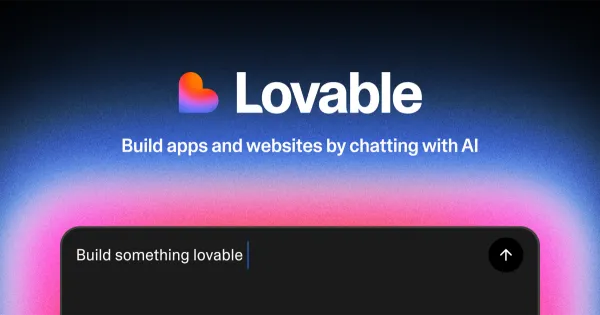Top 3 Pricing Strategies for Maximum Profit

When it comes to running a successful business, setting the right price is crucial. Pricing strategies influence not only how much profit a company can make but also its competitive position, customer perception, and overall business sustainability.
We will discuss the top 3 pricing strategies designed to maximize profit: Cost-Plus Pricing, Value-Based Pricing, and Dynamic Pricing. Each of these strategies offers unique advantages depending on the industry, customer base, and market conditions. By the end of this article, you'll have a complete understanding of how to apply these strategies to maximize your business’s profit potential.
Introduction to Pricing Strategies

Pricing is one of the most important decisions a business must make. The price you set for your products or services directly impacts your profit margin, customer demand, and market positioning. Pricing is not just about covering costs and earning profit—it's about finding the sweet spot that meets customer expectations while ensuring profitability.
Relying on intuition alone for pricing decisions is risky. Instead, businesses need structured pricing strategies that align with their overall goals. The right pricing strategy can help you:
- Increase profit margins
- Improve customer satisfaction and retention
- Strengthen your competitive edge
The aim of this article is to discuss the top 3 pricing strategies that have been proven to maximize profit, while also keeping other factors like market conditions and customer behavior in mind.
Understanding Profit Maximization

Before diving into the specifics of each pricing strategy, it’s essential to understand what profit maximization means. Profit maximization is not solely about charging the highest possible price—it’s about optimizing the balance between price and sales volume to achieve the highest possible return.
Several factors play a role in profit maximization:
- Cost structure: This includes both fixed and variable costs. To maximize profit, businesses must price their products above the total cost of production.
- Market demand: The willingness of customers to pay affects pricing decisions. If the price is too high, it may reduce demand; too low, and the business misses out on potential profit.
- Competitive landscape: Pricing also depends on what competitors are charging. A lower price may boost sales but at the risk of reduced margins, while a higher price can work if you offer superior value.
Each of the pricing strategies we’ll discuss—Cost-Plus, Value-Based, and Dynamic Pricing—can help businesses navigate these factors to optimize their profit potential.
Pricing Strategy 1) Cost-Plus Pricing Strategy

How it Works
The Cost-Plus Pricing strategy is perhaps the simplest and most widely used method. It involves adding a fixed percentage (or markup) to the cost of producing a product or delivering a service. The total cost includes both fixed costs (e.g., rent, equipment) and variable costs (e.g., raw materials, labor).
For example, if it costs $50 to produce a product and a company wants to apply a 20% markup, the selling price would be $60 ($50 + 20%).
This approach is straightforward because it guarantees that all costs are covered, and a predictable profit margin is achieved.
Advantages of Cost-Plus Pricing
- Simplicity: Cost-Plus Pricing is easy to calculate and implement, making it ideal for businesses that want a straightforward pricing approach.
- Transparency: It ensures all costs are covered, giving businesses confidence that they won’t operate at a loss.
- Predictable margins: Companies know what margin they will achieve as long as they maintain their cost structure and sales volume.
Disadvantages of Cost-Plus Pricing
- Ignores market demand: One of the major drawbacks of Cost-Plus Pricing is that it doesn't consider what customers are willing to pay or the price competitors are offering. This can lead to underpricing or overpricing.
- Potential for inefficiency: Since the markup is applied to costs, there is no incentive to minimize costs. Inefficient businesses may continue to pass higher costs onto customers without focusing on cost reduction.
- Fixed profit margin: The strategy locks in a fixed profit margin, which may not be ideal if customer demand would allow for higher pricing and greater profitability.
Example of Cost-Plus Pricing in Action
Walmart often uses a cost-plus approach for many of its everyday products. For example, if Walmart purchases a kitchen appliance from a manufacturer at $50 and applies a 20% markup, the selling price in stores would be $60. This straightforward method ensures that Walmart covers its costs while maintaining a consistent profit margin on each item sold, allowing it to offer low prices while still earning a profit.
Pricing Strategy 2) Value-Based Pricing Strategy

How it Works
Value-Based Pricing focuses on the perceived value of the product or service to the customer rather than the cost of production. This approach asks: “What is the customer willing to pay for the value they receive?” Companies that offer high-quality or unique products can charge a premium based on the value they deliver.
In Value-Based Pricing, companies may conduct market research, customer surveys, or analyze customer behavior to determine the price point that matches the perceived value. For example, luxury brands like Apple or Gucci use Value-Based Pricing by focusing on the exclusivity and quality of their products.
Advantages of Value-Based Pricing
- Maximizes profit potential: By pricing according to the value customers place on a product, businesses can potentially earn higher margins, especially in markets where demand is strong.
- Competitive advantage: Companies that successfully implement Value-Based Pricing can differentiate themselves from competitors by offering superior value rather than competing on price.
- Focus on customer satisfaction: Value-Based Pricing requires a deep understanding of customer needs, preferences, and pain points, leading to more tailored products and better customer relationships.
Disadvantages of Value-Based Pricing
- Requires extensive market research: Understanding what customers value and what they’re willing to pay can be complex and resource-intensive.
- Potential to misjudge customer perception: If a business overestimates the value of its offering, it risks setting a price too high, which could alienate customers and reduce sales volume.
- Not suitable for all industries: In industries where products are commoditized or competition is primarily price-driven, Value-Based Pricing may not be effective.
Example of Value-Based Pricing in Action
Rolex uses Value-Based Pricing by charging premium prices for its watches based on the perceived luxury and exclusivity they offer. Customers are willing to pay more for a Rolex due to its craftsmanship, prestige, and status, far beyond the actual production costs, allowing the brand to maintain its high-end market position.
Pricing Strategy 3) Dynamic Pricing Strategy

How it Works
Dynamic Pricing is a flexible pricing strategy where prices are adjusted in real-time based on various factors such as demand, market conditions, customer behavior, and even time of day. This strategy is commonly used by companies in industries such as travel, e-commerce, and entertainment, where demand can fluctuate significantly.
Dynamic Pricing models can be incredibly sophisticated, leveraging algorithms and artificial intelligence (AI) to predict optimal prices based on historical data, consumer behavior, and market trends.
For example, airlines often use dynamic pricing to adjust the price of tickets based on how full a flight is, how far in advance a ticket is purchased, and market demand.
Advantages of Dynamic Pricing
- Maximizes revenue: By adjusting prices in real-time based on demand, businesses can capture maximum revenue when demand is high and offer competitive prices when demand is low.
- Flexibility: This pricing model allows businesses to react to market conditions quickly, ensuring they stay competitive.
- Customer segmentation: Dynamic Pricing can be customized to different customer segments, offering higher prices to those willing to pay more and discounts to more price-sensitive customers.
Disadvantages of Dynamic Pricing
- Complexity: Implementing Dynamic Pricing requires sophisticated data analytics tools and algorithms, which may be costly to develop and maintain.
- Potential for customer dissatisfaction: Customers may feel frustrated if they realize they’ve paid more than others for the same product or service, potentially harming customer loyalty.
- Pricing volatility: Frequent price changes can confuse customers and lead to uncertainty, which might negatively affect purchasing decisions.
Example of Dynamic Pricing in Action
Uber is a well-known user of Dynamic Pricing, especially during peak demand periods. During rush hours, bad weather, or major events, Uber's pricing algorithm increases fares to match the high demand for rides, maximizing their revenue while balancing supply and demand.
How to Choose the Right Pricing Strategy for Your Business

Choosing the right pricing strategy depends on several factors, including your business model, market conditions, and customer base. Here’s how you can evaluate which strategy might work best for your business:
- Understand your cost structure: If your main concern is ensuring all costs are covered while earning a stable profit, Cost-Plus Pricing might be the best approach. This is ideal for companies with predictable production costs and less competition based on price.
- Analyze customer value perception: If your products offer unique benefits, such as high quality, innovation, or superior customer service, Value-Based Pricing can help you capture the most profit from customers who appreciate these features. Conduct customer research to understand how much value they place on your products or services.
- Evaluate market demand and competition: If your industry is highly competitive and demand fluctuates, Dynamic Pricing can help you maximize profit by adjusting prices based on real-time conditions. However, it’s essential to invest in the right tools and technology to execute this strategy effectively.
- Consider your business’s growth stage: Startups and new businesses may benefit from Cost-Plus Pricing to cover costs in the early stages, while more established companies can transition to Value-Based or Dynamic Pricing as they build customer loyalty and brand recognition.
- Industry-specific considerations: Different industries may be better suited for specific pricing models. For example, Cost-Plus Pricing is common in manufacturing, while Dynamic Pricing thrives in sectors like travel, hospitality, and e-commerce.
Final Thoughts
Pricing is a vital part of your business strategy that affects your brand, market position, and profitability. The right approach not only increases profits but also strengthens customer relationships and competitiveness. Cost-Plus Pricing is simple and ensures costs are covered, making it ideal for predictability. Value-Based Pricing focuses on perceived customer value, leading to higher profits and differentiation. Dynamic Pricing adapts to market conditions, maximizing revenue, but requires careful management.
Choosing the best strategy involves understanding costs, customer behavior, and market trends. Flexibility and adapting your pricing based on customer feedback are key to long-term success.
Key Takeaways
| Pricing Strategy | How It Works | Advantages | Disadvantages | Best For | Companies |
|---|---|---|---|---|---|
| Cost-Plus Pricing | Adds a markup to costs | Simple and covers costs | Ignores market demand | Stable cost industries | Walmart, Retail Stores |
| Value-Based Pricing | Based on customer value | Maximizes profit, unique | Needs research, risk of overpricing | Premium products | Rolex, Apple, Mercedes |
| Dynamic Pricing | Adjusts prices in real-time | Flexible, maximizes revenue | Complex, may frustrate customers | Changing demand markets | Uber, Airlines, Hotels |





